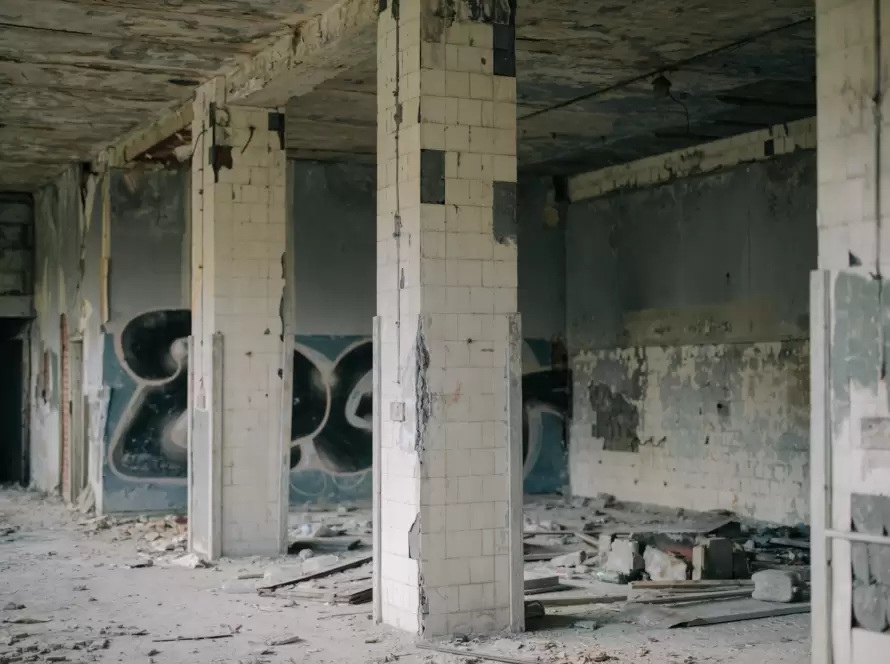Generated by Contentify AI
- Introduction
- What is Bootstrap Collapse?
- Setting Up Bootstrap 5
- Adding Collapse Component to Your Page
- Customizing the Collapse Behavior
- Animate the Collapse Transition
- Customizing the Collapse Style
- Handling Events in Collapse
- Best Practices for Using Collapse
- Conclusion

Introduction
If you’re looking for an efficient way to organize your website’s content with the help of Bootstrap 5, then the collapse feature is for you! This powerful feature allows you to hide and show elements on your website with the click of a button. It’s a great way to make large chunks of content easier to digest and navigate.
The collapse feature is incredibly easy to set up and customize in Bootstrap 5. All it requires is a few lines of code and a few adjustments. In this blog post, we’ll talk about how to set up and customize the collapse feature in Bootstrap 5.
First, you’ll need to include the Bootstrap 5’s JavaScript and CSS files in the head of your HTML document. Doing so will give you access to the collapse feature. Once you have those two files in place, you can create a div with the class of collapse and add the data-toggle attribute. This tells Bootstrap 5 that the div should be collapsible.
Now it’s time to customize the collapse feature. You can adjust the appearance of the collapse feature using Bootstrap 5’s classes. You can change the color, size, and shape of the collapse element. You can also adjust the transition speed and animation using CSS.
Finally, you can add custom JavaScript to the collapse feature to make it even more interactive. For example, you can create a toggle button that will open and close the collapse feature with a single click. This is an incredibly powerful way to improve the user experience of your website.
As you can see, setting up and customizing the collapse feature in Bootstrap 5 is incredibly easy. All you need is a few lines of code and a few adjustments to get the feature up and running. With Bootstrap 5’s built-in classes and JavaScript, you can quickly create a functional and visually appealing experience.
What is Bootstrap Collapse?
Bootstrap Collapse is an essential feature of Bootstrap 5, the latest version of the popular CSS framework. It allows you to hide and show content within an HTML element. This allows developers to add an interactive component to their page, allowing users to toggle content in and out of view.
The collapse feature works by placing a collapsible item within the HTML element. This item can be clicked to toggle the content in and out of view. By default, the content is hidden and clicking the collapsible item will reveal the content. The content can also be set to appear on page load, so users do not have to take action to view the content.
Setting up Bootstrap Collapse is relatively straightforward. You’ll first need to include the Bootstrap 5 CSS file in your HTML document. You’ll also need to wrap the content you wish to collapse within an element, such as a div. You’ll need to give the collapsible element a unique ID and then add the collapse class to it. You can also use the data-toggle attribute to allow users to toggle the content in and out of view.
Bootstrap Collapse also offers some customizable options in order to increase the appeal of the component. You can set the transition speed, the accordion-style effect, and the “show” effect. You can also set the default state of the content, allowing it to either be hidden or visible on page load.
In conclusion, Bootstrap Collapse is an incredibly useful feature that can add a lot of interactivity to your webpage. It’s easy to set up and provides a variety of customization options.
Setting Up Bootstrap 5
The collapse component in Bootstrap 5 is a powerful tool for creating a collapsible, expandable content area. This can be used for organizing content, creating navigation bars, and much more. It is also incredibly simple to set up and customize, allowing you to easily create a unique look and feel for your website.
In this article, we’ll take a look at how to set up and customize the collapse component in Bootstrap 5. We’ll go over the different classes and attributes you need to use to create a fully functioning collapse component. We’ll also look at some of the more advanced features of the component and how to customize them.
First, let’s start by setting up the component. To do this, you’ll need to include the Bootstrap 5 JavaScript file in the head of your HTML document. You’ll also need to include the Bootstrap 5 CSS file. Then, you can add the “collapse” class to the HTML element you want to make collapsible.
Next, you’ll need to add the “data-toggle” attribute to the element you want to make collapsible. This attribute tells the component which HTML element to use as the collapsible element. To make the content collapsible, you’ll also need to set the “data-target” attribute to the element you want to collapse.
Once you’ve added these attributes, you can customize the behavior of the collapse component. To do this, you can add specific classes to the element. For example, you can add the “collapse-show” class to the element to make the content visible by default. You can also add the “collapse-hide” class to the element to make the content hidden by default.
Finally, you can customize the animation of the collapse component by adding a few attributes. The “data-animation” attribute allows you to set the animation type, such as “slide” or “fade”. You can also set the “data-duration” attribute to set the duration of the animation.
With these basic steps, you can easily set up and customize a collapse component in Bootstrap 5. You can further customize its behavior and animation with the different classes and attributes available. This makes the component highly versatile and
Adding Collapse Component to Your Page
The Collapse component in Bootstrap 5 is a great way to reduce clutter on your page. It allows you to hide and show content on a page based on user interaction. This is incredibly useful when you want to show extra detail when the user chooses to engage with it.
To add a Collapse component to your page, you will need to utilize the Bootstrap 5’s JavaScript functionality. The HTML markup for the Collapse component will use the data-toggle and data-target attributes. The data-toggle attribute will specify which component you want to target, and the data-target attribute will specify which part of the content you want to be collapsible. To get started, add the data-toggle and data-target attributes to the same element you want to collapse.
Once you have the data-toggle and data-target attributes set up, you can use Bootstrap 5’s JavaScript to customize how the Collapse component functions. You can specify if the Collapse component should show or hide content when the user interacts with it. You can also customize the transition duration, allowing you to specify how quickly the content should appear or disappear.
Using Bootstrap 5’s JavaScript, you can also create a Collapse component with multiple sections. This allows you to hide multiple pieces of related content. This is a great way to reduce clutter on your page, while still providing your users with engaging content.
Adding a Collapse component to your page is a great way to reduce clutter and engage with your users. Utilizing Bootstrap 5’s JavaScript functionality, you can customize the Collapse component to fit your needs. By utilizing the data-toggle and data-target attributes, you can control which part of the content is collapsible, and you can customize the transition duration. You can also have multiple sections in a Collapse component, allowing you to show different pieces of related content. With Bootstrap 5’s Collapse component, you can create a more organized, engaging, and interactive page.
Customizing the Collapse Behavior
Collapsing sections are an essential part of many webpages that allow users to access information quickly and easily. Bootstrap 5 has the ability to customize the behavior of collapsible sections with its Collapse module. This module provides a range of options to customize the way the element collapses and expands.
The first option available is the data-toggle attribute. This allows you to choose between two behaviors: data-toggle=”collapse” and data-toggle=”collapse-show”. The first will open the element when the user clicks on it, while the second will close it when the user clicks. Additionally, you can also specify a data-parent attribute that allows you to specify which elements should be collapsed/expanded when the user clicks on the current element.
The second option available is the data-target attribute. This allows you to specify which element should be collapsed/expanded when the user clicks on the current element. This attribute can be used in conjunction with the data-toggle attribute to provide more precise control over the behavior of the collapsible element.
Finally, you can also specify the data-height attribute. This attribute allows you to specify the height of the collapsed element. This allows you to determine how much of the content is visible when the user clicks on the collapsible element.
In conclusion, Bootstrap 5 provides an easy to use and powerful way to customize the behavior of collapsible elements. By using the data-toggle, data-parent, data-target, and data-height attributes, you can easily create custom collapsible behavior for your webpage.
Animate the Collapse Transition
When setting up and customizing Collapse in Bootstrap 5, one of the most interesting features is the ability to animate the Collapse transition. This allows you to create a dynamic and interactive experience for your website or web application. With this feature, you can create various types of animations between the collapsed and expanded states of the component.
In order to animate the Collapse transition, you first need to set up the necessary HTML structure. This includes a container with a data-toggle attribute, a trigger, and a panel. You can then use the data-target attribute on the trigger to target the panel that you would like to collapse.
Once you have set up the necessary HTML structures, you can then start creating the animations. The Collapse component supports multiple animation types, such as slide, fade, and scale. You can also set the animation speed and duration of the animation.
In addition to the animation types, you can also customize the easing of the animation. This helps make the transition from the collapsed state to the expanded state more natural and fluid.
By utilizing the animation options available in the Collapse component, you can create an interactive and dynamic experience for your website or web application. With this feature, you can animate the Collapse transition and make your website or web application stand out from the rest.
Customizing the Collapse Style
Bootstrap 5’s Set Up and Customize Collapse section provides developers with a great way to create their own custom collapse styles. This section allows users to customize the look and feel of their collapse elements, from the color schemes to the transitions and more.
The Collapse Style section allows developers to set the background color, text color, border style, transition duration, and more. The background color of the collapse element can be set to anything, from the default “light” theme to something more custom, like a deep navy blue. The text color can also be set to any color, allowing developers to create their own branded look.
The border style and transition duration components are some of the most important parts of customizing the collapse element. The border style can be set to any of the available options, including the default “dotted” and “solid” lines. The transition duration is also an important feature, as it determines how quickly or slowly the collapse element opens and closes.
Once the look and feel of the collapse element has been customized, it’s time to add some custom JavaScript. This can be done using the “Custom JavaScript” field in the Collapse Style section. This code can be used to add an additional layer of interaction and animation to the collapse element, making it look even more professional and modern.
Creating a custom collapse style in Bootstrap 5 is an easy and straightforward process that can quickly bring any project to life. With the right color scheme, border style, and transition duration, developers can create a unique and visually appealing collapse element that will make their project stand out from the competition.
Handling Events in Collapse
When it comes to setting up and customizing Collapse in Bootstrap 5, the handling of events is an important aspect that should not be overlooked. Events are triggered when a user interacts with the Collapse component and gives developers the ability to respond to user actions in a meaningful way.
In this article, we’ll cover how to set up and customize Collapse events in Bootstrap 5. We’ll also discuss a few tips and tricks that can help you get the most out of the Collapse component.
First, let’s quickly go over the different events that are available in Collapse. The main events are shown, hidden, and toggle. With these three events, you can respond to user actions like expanding or collapsing a Collapse component.
You can easily set up the events in Collapse by adding a data-toggle attribute to the Collapse component. For example, to set up the ‘shown’ event, add the data-toggle=”shown” attribute to the Collapse component. Once this is done, you can then add an event listener to the Collapse component that will respond when the event is triggered.
You can also customize the events in Collapse by using the data-event attribute. The value of this attribute should be the event type that you wish to customize. For example, if you want to customize the ‘toggle’ event, set the data-event=”toggle” attribute. This will allow you to customize how the Collapse component responds to a user action.
Finally, there are a few tips and tricks that can help you get the most out of the Collapse component. For example, you can use the data-target attribute to easily target specific Collapse components. This makes it easier to control the events that are triggered and respond to them in the way that you desire.
In conclusion, setting up and customizing events in Collapse is an important aspect of working with Bootstrap 5. With the events available, you can easily respond to user actions in a meaningful way. You can also customize the events to respond to user actions in the way that you desire. Finally, there are a few tips and tricks that can help you get the most out of the Collapse component.
Best Practices for Using Collapse
When it comes to using the collapse section of Set Up and Customize Collapse in Bootstrap 5, there are certain best practices that should be followed. Doing so can help you create an optimal experience for your users and ensure that your website looks professional.
First, it’s important to understand how the collapse section works. In Bootstrap 5, the collapse section is a collapsible area that can be used to hide and show content on a web page. This function is useful when you want to display a lot of information without taking up too much space.
When using the collapse section, it is important to use it sparingly. Too many collapse sections can make the page look cluttered and overwhelming for the user. It is best to use collapse sections to organize information into sections. This will help the user understand the information better and more quickly.
Another best practice for using the collapse section is to make sure that the text is readable and easy to understand. Avoid using complex language or jargon that the user may not be familiar with. Additionally, make sure that the text is concise and to the point. This will help the user get the information they need quickly and easily.
Finally, make sure that the collapse section is easy to open and close. Bootstrap 5 allows for customizing the open and close icons for the collapse section. Make sure that the icons are easy to identify and understand. This will help users quickly open and close the collapse section when they need to.
By following these best practices, you can ensure that your website looks professional and organized and that the user experience is pleasant and easy.
Conclusion
The Collapse feature in Bootstrap 5 is a great way to add visual interest and expandable content to your project. With a few simple steps, you can easily set up and customize the Collapse feature to create an engaging and dynamic experience for your users. All you need to do is import the relevant files into your project, set up the target elements, and construct the HTML for the content that should be collapsed and expanded. You can also customize the appearance of the Collapse feature with classes and attributes, like adding a toggle button, changing the style of the toggle, and more. With a bit of work, you can create an effective and interactive experience for your users.



